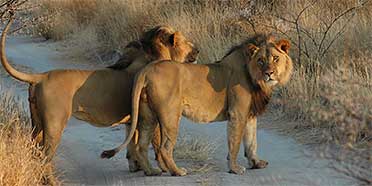
Safari Tours to Central Kalahari GR
-
![7-Day Luxury Botswana Safari Tour]()
7-Day Luxury Botswana Safari Tour
$6,599 to $8,799 pp (USD)
Botswana: Private tourLuxuryLodge & Tented Bush Camp
You Visit: Maun (Start), Central Kalahari GR, Okavango Delta, Chobe NP, Kasane (End)

Wayfairer Travel
4.8/5 – 182 Reviews
-

7-Day Botswana Grasslands & Saguni Safari Lodge Tour
$3,305 pp (USD)
Botswana: Shared tour (max 10 people per vehicle)
Mid-range Lodge & Tented CampYou Visit: Maun (Start), Central Kalahari GR, Khwai Concession (Okavango Delta), Maun Airport (End)

MoAfrika Tours
4.9/5 – 2,204 Reviews
-
![7-Day Central Kalahari & Nxai Pans]()
7-Day Central Kalahari & Nxai Pans
$2,750 pp (USD)
Botswana: Shared tour (max 4 people per vehicle)BudgetCamping & Hotel
You Visit: Maun Airport (Start), Central Kalahari GR, Nxai Pan NP, Maun (End)

Kalahari Marsh Safari Holidays
4.9/5 – 41 Reviews

 Botswana Parks
Botswana Parks












